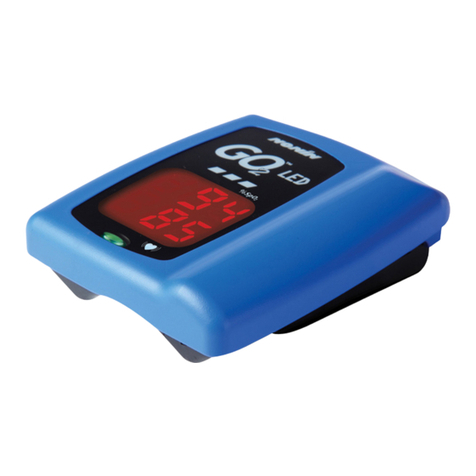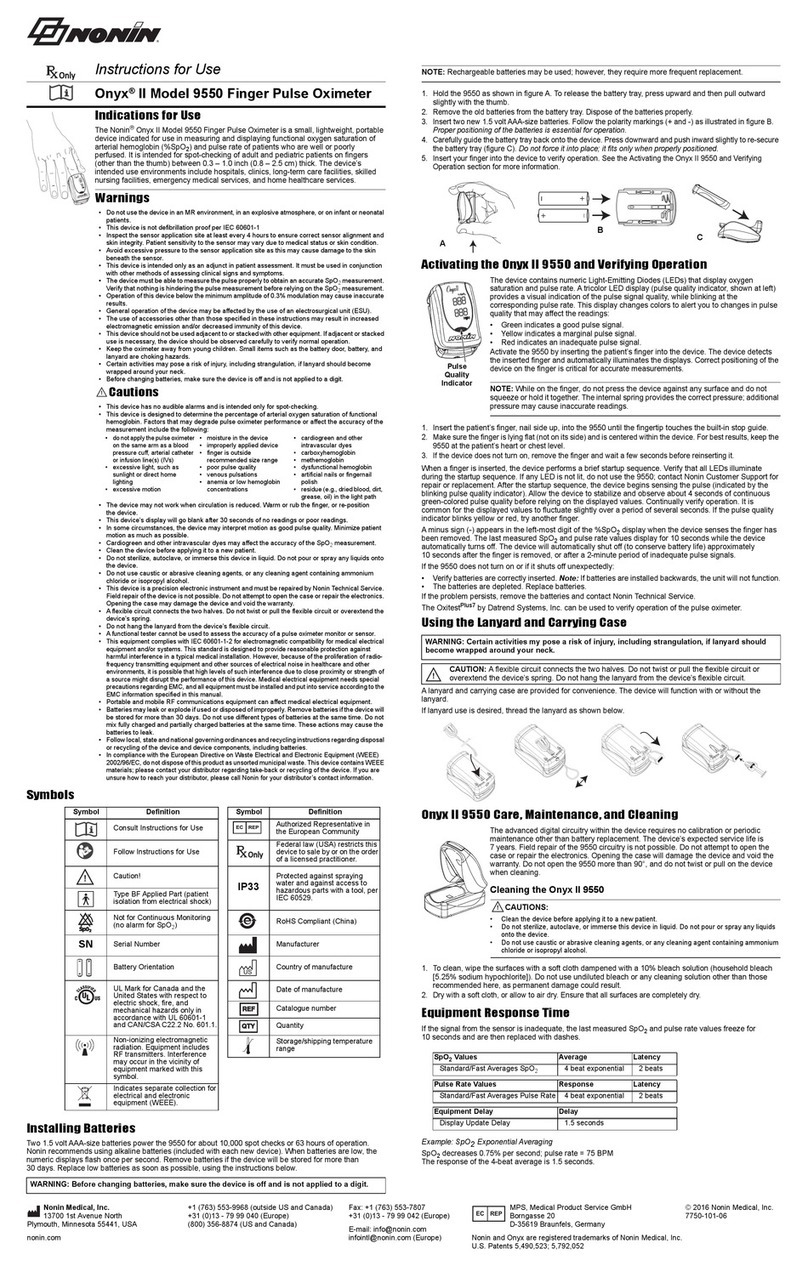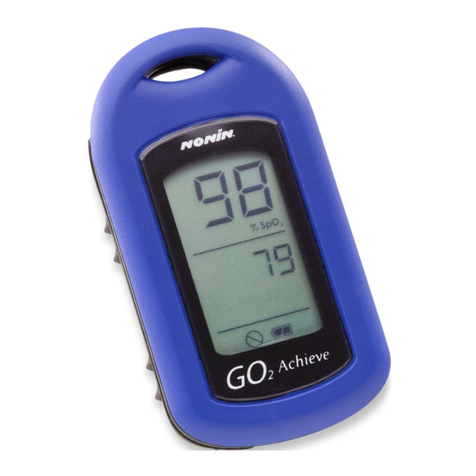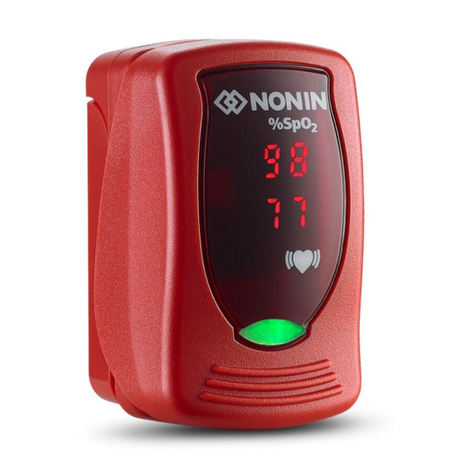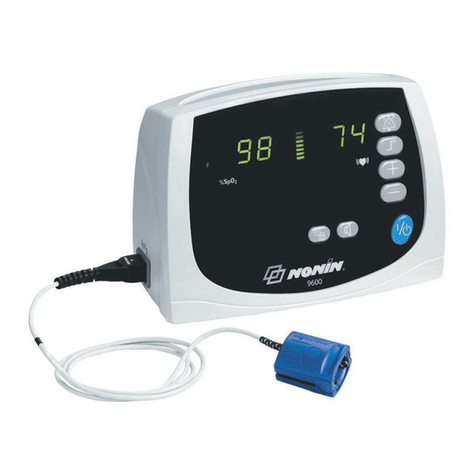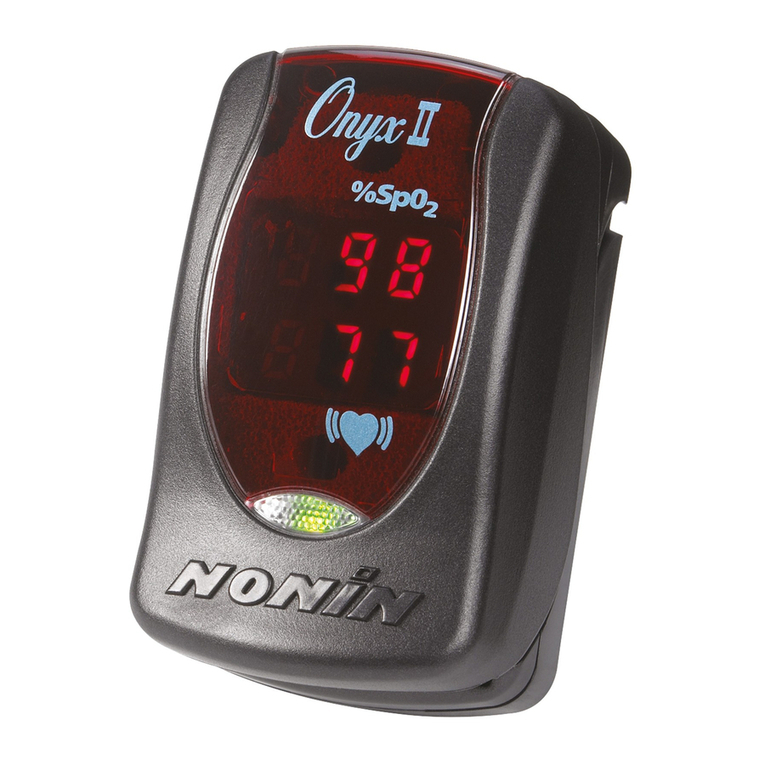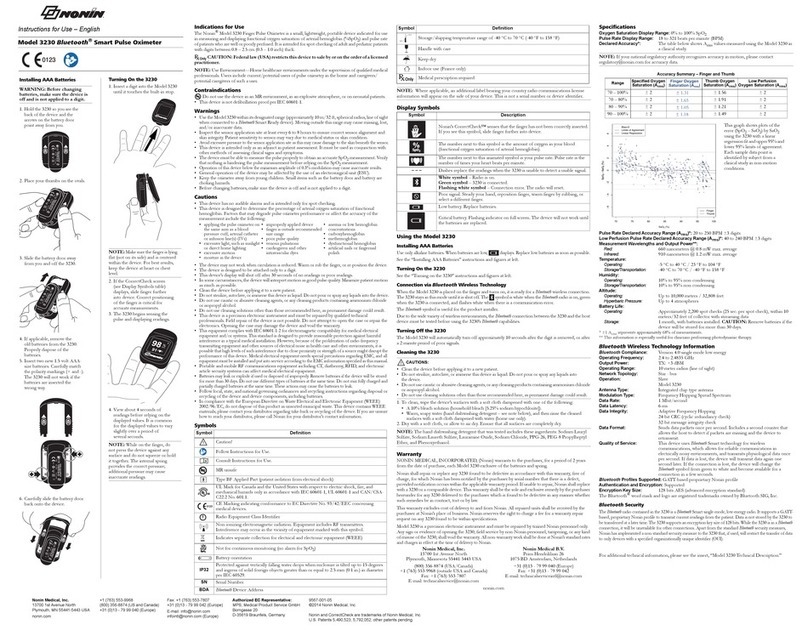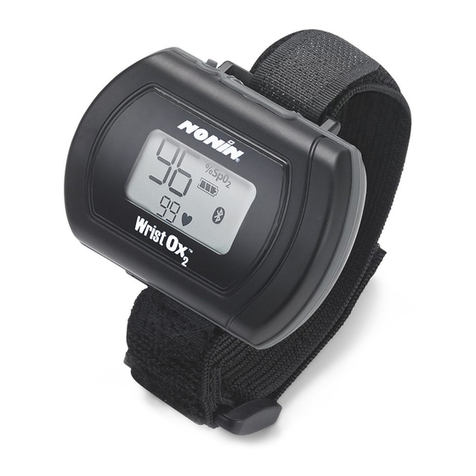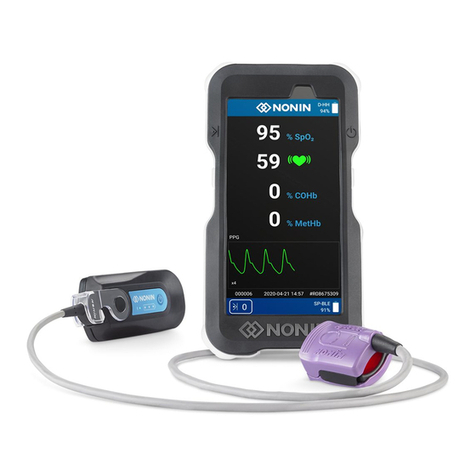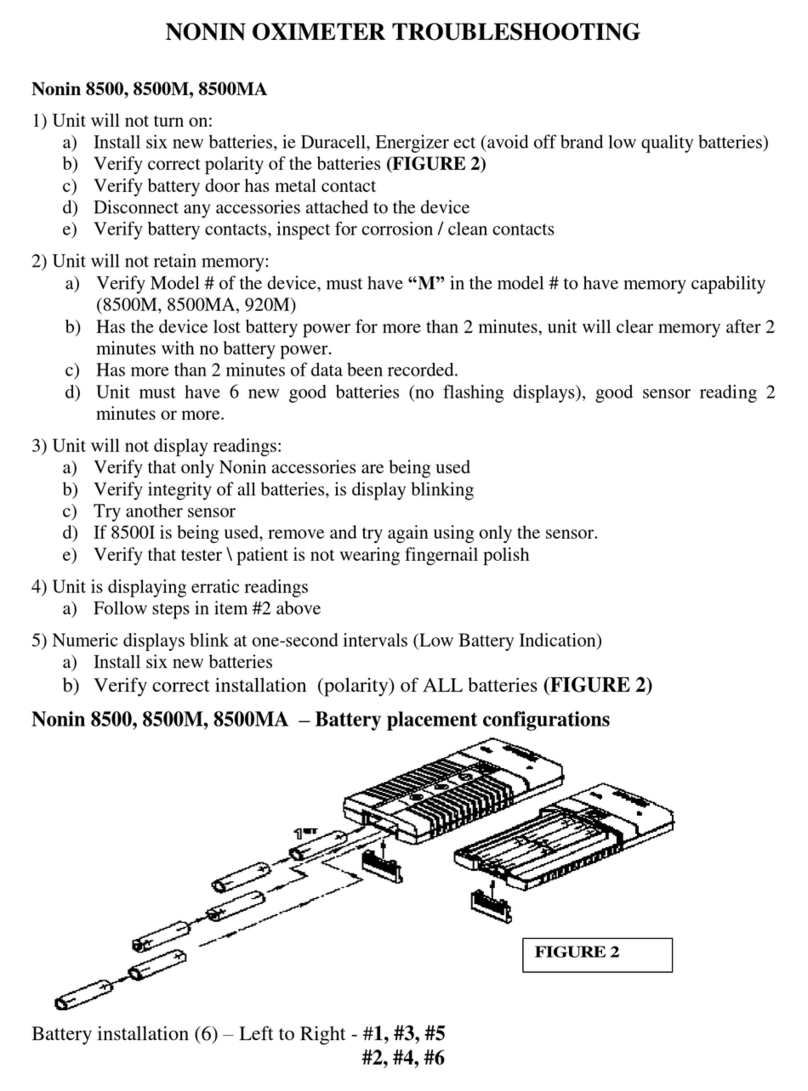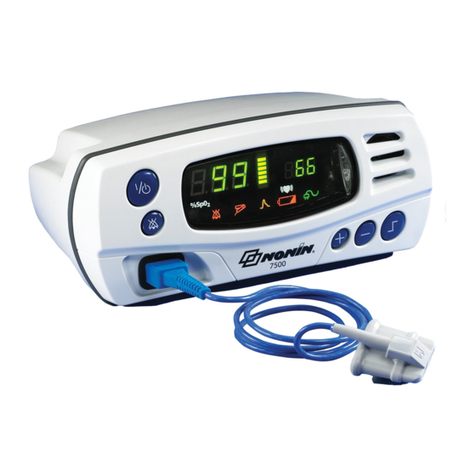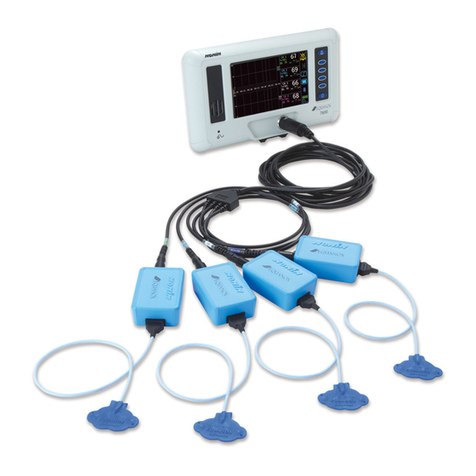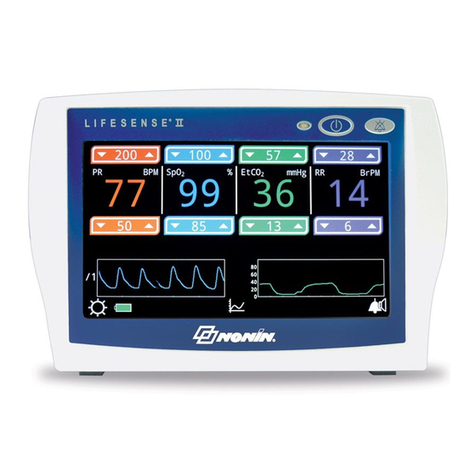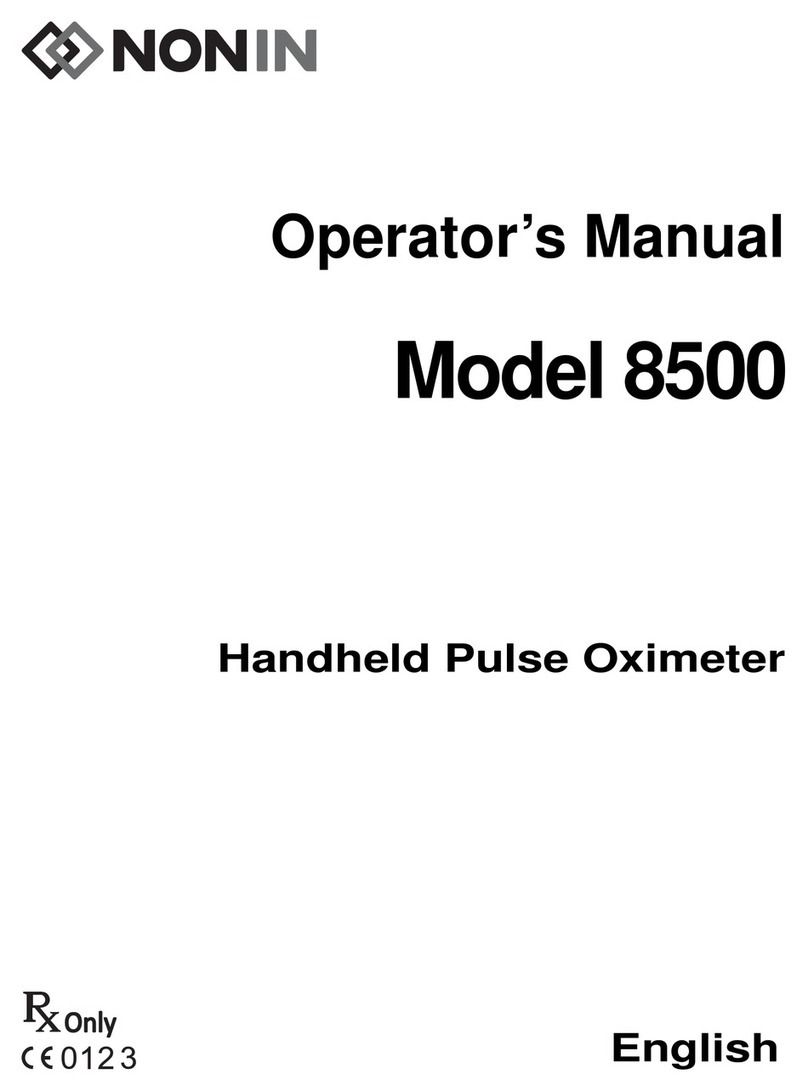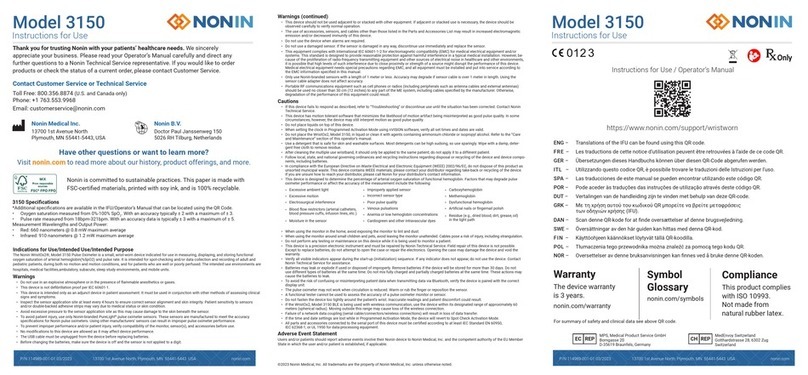
2
• Verify that all visible indicators illuminate during the startup
(initialization) sequence. If any indicator is not lit, do not use the
8500. Contact NONIN Customer Support for repair or replacement.
• The 8500 must be able to measure the pulse properly in order to
obtain an accurate SpO2 measurement. Verify that nothing is
hindering the pulse measurement before relying on the SpO2
measurement.
• The 8500 might not work on all patients. If you are unable to achieve
stable readings, discontinue use.
• The 8500 might misinterpret motion as good pulse quality. Minimize
patient motion as much as possible.
• The 8500 is designed to determine the percentage of arterial oxygen
saturation of functional hemoglobin. Significant levels of
dysfunctional hemoglobin may affect the accuracy of the
measurement.
• Cardiogreen and other intravascular dyes, depending on the
concentration, might affect the accuracy of the SpO2 measurement.
• Ear Clip and Reflectance pulse oximeter sensors are not
recommended for pediatric or neonatal use. The accuracy of these
sensors has not been established for pediatric or neonatal use.
• Do not immerse the 8500 or NONIN sensors in liquid.
• Do not use caustic or abrasive cleaning agents on the 8500 or on the
sensors.
• The 8500 must be repaired only by trained NONIN personnel.
• Do not use different types of batteries or mix fully- and partially-
charged batteries at the same time.; battery leakage might result.
• Do not remove any covers (except the battery cover) when replacing
batteries.
• Follow local ordinances and recycling instructions regarding disposal
or recycling of the device and device components, including batteries.
Batteries might leak or explode if used or disposed of improperly.
• Remove the batteries to avoid the risk of leakage if the 8500 will be
stored for more than one month.
• This equipment complies with International Standard EN 60601-1-
2:1993 for electromagnetic compatibility for medical electrical
equipment and/or systems. This standard is designed to provide
reasonable protection against harmful interference in a typical medical
installation. However, because of the proliferation of radio-frequency
transmitting equipment and other sources of electrical noise in
healthcare and other environments (for example, cellular phones,
electrical appliances), it is possible that high levels of such
interference due to close proximity or strength of a source might
result in disruption of performance of this device.





















